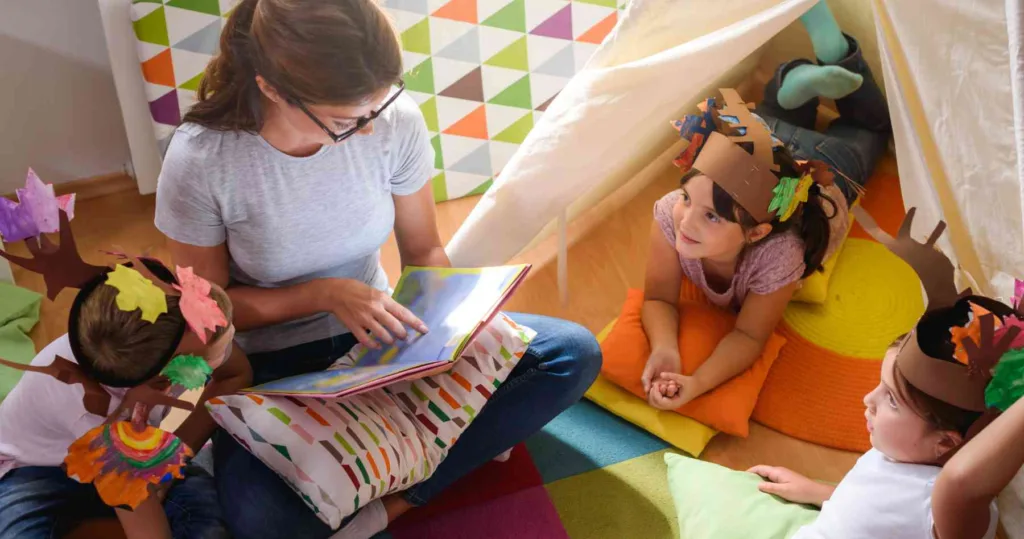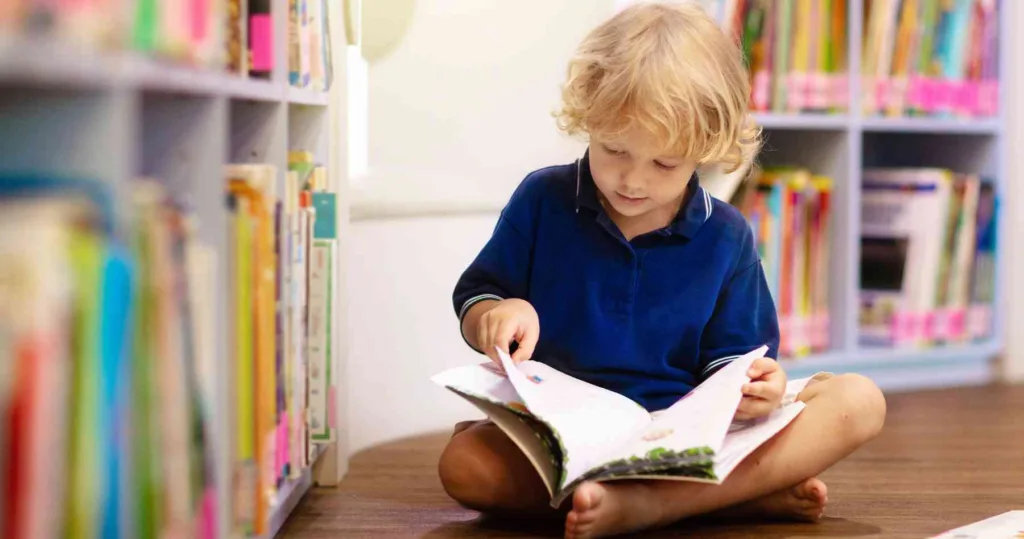Unleashing the Imagination: How to Encourage Creativity in Pre-Primary Children
Creativity is the bedrock of innovation, problem-solving, and personal growth. In the formative years of pre-primary education, fostering creativity can shape a child’s entire future. This article is your compass to navigate the exciting journey of nurturing creativity in pre-primary children.

Setting the Stage
The Significance of Creativity
Creativity is more than just drawing or crafting; it’s the ability to think beyond the ordinary, solve problems uniquely, and express oneself freely. In today’s rapidly changing world, these skills are indispensable.
Understanding Pre-Primary Years
The pre-primary years (ages 3 to 6) are a critical phase in a child’s development. It’s when their minds are like sponges, soaking up knowledge and experiences. Harnessing creativity during this period is exceptionally rewarding and is important to child development.
The Path to Creativity
Encouraging Playfulness
Children learn best through play. Incorporating play into their daily routines can stimulate creativity. Activities like building with blocks, imaginative role-play, and drawing without boundaries can work wonders as creative development activities for preschoolers.
Embracing Curiosity
Curiosity fuels creativity. Encourage questions and explorations. Provide them with books, puzzles, and opportunities to investigate their surroundings.
Artistic Expression
Art allows children to express themselves. Provide them with various art supplies and encourage them to paint, draw, or sculpt as they like. It’s about the process, not the end result.
Storytelling Adventures
Narratives ignite imagination. Share stories, ask them to create their own tales, and let them illustrate their narratives. This sparks creativity and language development.
The Role of the Environment
Creating a Creative Space
Design a dedicated creative corner in your home or classroom. Stock it with materials like colored paper, crayons, clay, and puzzles. Make it an inviting oasis of imagination.
Inspirational Artwork
Hang up children’s artwork proudly. This not only boosts their confidence but also inspires them to continue exploring their creative abilities, because creativity is important to child.
Outdoor Exploration
Nature is a boundless source of inspiration. Outdoor adventures like hiking, gardening, and simply playing in the park can ignite creativity and curiosity.
The Power of Encouragement
Positive Reinforcement
Acknowledge and praise their creative efforts. Celebrate their uniqueness and let them know that creativity is something to be proud of.
Be a Role Model
Children learn by example. Show your own creative pursuits, whether it’s painting, gardening, or crafting. Let them see your passion for creativity.
Nurturing Creativity at School
Encouraging Group Activities
Collaborative projects, such as group storytelling or building projects, can enhance creativity and social skills.
Creative Challenges
Introduce age-appropriate challenges that require innovative solutions. This can be as simple as a puzzle or as complex as a group project.
Integration with Curriculum
Integrate creative activities into the curriculum. This ensures that creativity is not sidelined but considered an essential skill.
Q: How can I tell if my child is creative?
A: Look for signs like imaginative play, storytelling, and a love for art. Creativity often shines through in everyday activities.
Q: What if my child seems more interested in structured activities?
A: It’s okay to balance structured learning with creative play. Find a harmony that suits your child’s temperament.
Q: Are there any downsides to encouraging creativity?
A: While creativity is crucial, ensure it doesn’t interfere with essential skills like reading and math. Balance is key.
Q: Can creativity be nurtured in a child with learning disabilities?
A: Absolutely. Tailor creative activities to suit their abilities, and watch them thrive.
Q: How do I deal with a messy creative space?
A: Embrace the mess. It’s a sign of active exploration. Teach your child to clean up after their creative sessions.
Q: Is there an age when it’s too late to nurture creativity?
A: It’s never too late to encourage creativity, but the pre-primary years provide an excellent foundation.
Fostering creativity in pre-primary children is a rewarding journey. It shapes their thinking, problem-solving abilities, and self-expression. By providing a conducive environment, encouragement, and a dash of inspiration, you can set them on a path to a lifetime of imaginative brilliance.
Remember, creativity knows no bounds, and with your guidance, the future holds boundless creative potential for pre-primary children.
Get In touch
Leave us a message
4 Claret Road, Table View, 7441
(021) 556 4146
office@applebeekids.com
Unlocking Creativity through Literature
Reading Adventures
Reading is a gateway to creativity. Choose age-appropriate books with captivating illustrations. Encourage your child to ask questions, predict what happens next, and even create their versions of the story.
The Magic of Imagination
During story-time, ask your child to close their eyes and visualize the scenes. This imaginative exercise enhances their storytelling abilities and imaginative thinking.
Encouraging Creativity Through Technology
Selecting Educational Apps
In today’s digital age, there are numerous educational apps designed to stimulate creativity. Look for apps that encourage drawing, storytelling, and problem-solving.
Creative Screen Time
While screen time should be limited, it can also be used productively. Encourage your child to create digital art or explore educational websites that promote creativity.
Celebrating Creative Achievements
Art Exhibitions
Host mini art exhibitions at home or school, showcasing children’s artwork. This boosts their self-esteem and motivates them to continue exploring their artistic side.
Creative Contests
Participating in creative contests, whether drawing, storytelling, or crafting, can be an exciting way to challenge and motivate pre-primary children.
Integrating Creativity into Daily Life
Cooking Adventures
Cooking together can be a creative endeavor. Allow your child to mix ingredients, decorate cookies, or even invent their recipes (with your supervision, of course).
Gardening as an Art
Planting and caring for a garden can be a beautiful canvas for creativity. Let your child choose the flowers or vegetables to plant and allow them to design the garden layout.
The Role of Patience and Persistence
Embracing Mistakes
In the creative process, mistakes are stepping stones to improvement. Teach your child that it’s okay to make mistakes and that they can learn from them.
Encourage Perseverance
Creativity can be frustrating at times. Encourage your child to persevere through challenges and not give up when their creations don’t turn out as expected.
Resources for Parents and Educators
Creative Workshops
Look for local creative workshops or online classes that cater to pre-primary children. These classes provide expert guidance and social interaction.
Creative Toys and Kits
Invest in toys and kits that promote creativity, such as building blocks, art sets, or science experiment kits. These tools can inspire innovation.

In the age of information and technology, nurturing creativity in pre-primary children is more critical than ever. By incorporating these strategies into their daily lives, parents and educators can unlock the creative potential within each child.
Creativity is not a fixed trait but a skill that can be cultivated with patience, encouragement, and a nurturing environment. As children embark on this journey of self-expression and imagination, they lay the foundation for a future filled with innovation and limitless possibilities.
Remember, the question is not whether pre-primary children are creative; it’s how we can guide and support them in expressing their unique creativity.
Cultivating Creativity through Music and Movement
Dance and Expression
Encourage your child to move freely to music. Dancing not only fosters creativity but also improves motor skills and body awareness. Provide different types of music and see how they interpret each one uniquely.
Musical Instruments
Introduce your child to simple musical instruments like xylophones, drums, or keyboards. Let them experiment with sounds and rhythms, nurturing their sense of auditory creativity.
Nature Exploration: A Canvas for Creativity
Nature Art
Take nature walks and collect interesting leaves, twigs, and stones. These natural materials can be used in arts and crafts projects, allowing your child to create unique sculptures and collages.
Outdoor Sketching
Bring sketchbooks and colored pencils on your outdoor adventures. Encourage your child to draw what they see in nature, fostering an appreciation for the world around them.
Encourage Divergent Thinking
Open-Ended Questions
Ask your child open-ended questions that have no right or wrong answers. Questions like, “What if you could fly?” or “How would you design a magical castle?” promote divergent thinking.
Brainstorming Sessions
Hold brainstorming sessions where your child can come up with as many ideas as possible on a particular topic. This exercise enhances their ability to think creatively and find innovative solutions.
Family Creative Time
Creative Family Projects
Engage in family creative projects, such as painting a mural together or creating a story collectively. This not only strengthens family bonds but also encourages creativity.
Sharing Stories
Share personal stories from your own childhood that involve creativity. These anecdotes can inspire and motivate your child to explore their creative side.
Cultivating Empathy and Imagination
Role-Playing
Encourage your child to engage in role-playing games. This allows them to step into different roles, fostering empathy and enhancing their storytelling abilities.
Creative Problem Solving
Present them with hypothetical scenarios and ask how they would solve problems in imaginative and creative ways. This helps them think outside the box.
Nurturing Creativity at Pre-Primary School
Inclusive Art Activities
Pre-primary educators should include art activities that accommodate different skill levels. This ensures that every child can participate and feel a sense of achievement.
Encouraging Peer Feedback
Promote a culture of constructive feedback among pre-primary children. Encourage them to share and discuss their creative projects with peers.
The Joy of Creative Expression
The Process Over the Product
Emphasize that creativity is about the journey, not just the final product. Let your child know that their efforts and exploration are more important than achieving perfection.
Celebrating Small Wins
Celebrate even the smallest creative achievements. Whether it’s finishing a coloring page or telling a creative story, every step matters.
Nurturing creativity in pre-primary children is a dynamic and rewarding endeavor. It involves providing a rich environment, encouraging diverse forms of expression, and instilling a lifelong love for creative thinking.
By following the strategies outlined in this comprehensive guide, parents and educators can play a pivotal role in helping children unleash their full creative potential. Remember that every child is a unique artist, storyteller, and problem solver waiting to be discovered.
In the end, the goal is not only to raise creatively confident children but also to foster a generation that will shape a brighter, more innovative future.
